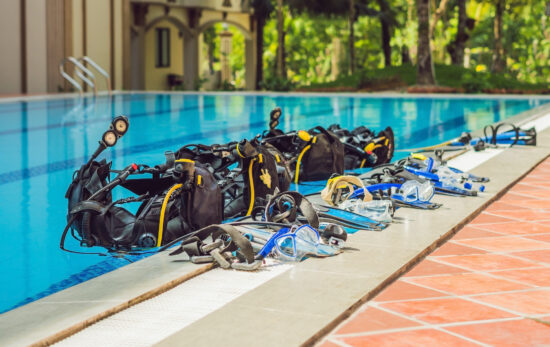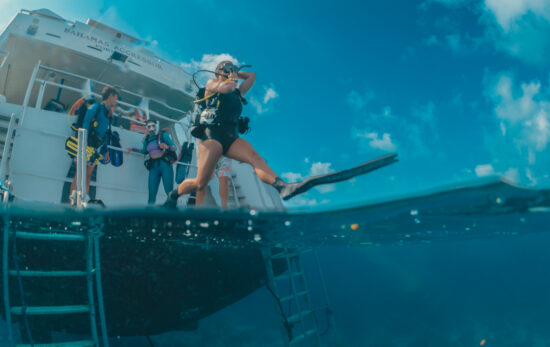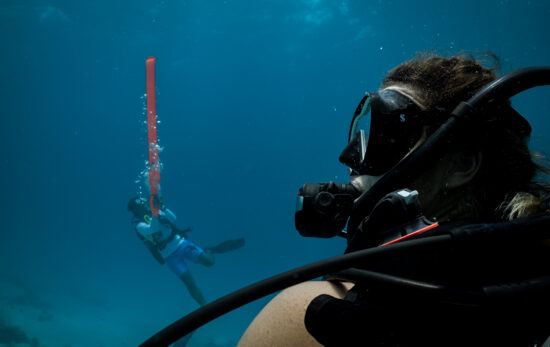Whether you’re a newly certified Open Water Diver or you have dozens of logged dives under 18 meters (60 feet), you may be wondering if taking the PADI Advanced Open Water Diver course is the next step for you. We’re here to tell you that, yes, it absolutely is! And if you’ve been waiting for a sign, here are seven great reasons to get started on your Advanced Open Water Diver course right now.
But, before we dive into the seven reasons you should take your Advanced Open Water Diver course, here are some quick answers to the most asked questions about the second level of diving certification:
- How hard is the PADI Advanced Open Water Diver course? Considering you’ve already passed the PADI Open Water Diver course, the Advanced Open Water Diver course is simple. You’ll build on the skills you already possess to become a more confident diver and to better adapt to diving conditions.
- Do I need to be an advanced diver to take the PADI Advanced Open Water Course? No! The Advanced Open Water Diver course is open to any Open Water Diver. During the course, you will advance your existing skills and become an advanced diver during the program. (More on this below.)
- How many dives are required during the course? Five. You’ll need at least two days and five Adventure Dives to become an Advanced Open Water Diver.
- What are the five dives that I need to do? Two of the five dives are mandatory. Those are the deep dive (up to 30 meters / 100 feet) and the underwater navigation dive. The remaining three dives are yours to choose (see point two below for the complete list of options).
- Do I need to complete all five dives in one go? No – not at all. The five dives are known as “Adventure Dives”, and you can complete them one by one at different times. Be sure that your instructor for each Adventure Dive records it in your logbook and signs it off as an Adventure Dive. If you intend to make the dives with different instructors, ask for your student record document so that you can take it with you and provide it to your next instructor.
- How deep can an Advanced Open Water Diver go? Once you are certified as an Advanced Open Water Diver, you’ll be able to dive to 100 feet (30 meters).
- What comes after the Advanced Open Water Diver course? The next core course is the PADI Rescue Diver course.
Now that we’ve answered a few of the big questions about the Advanced Open Water Diver course, let’s explore the seven reasons why you should continue your dive education with this certification.
1. Build on and Practice the Skills You Learned in the Open Water Diver Course
The first thing to address, and dispel, is the myth that you need to be advanced or have advanced skills to take the PADI Advanced Open Water Diver course. The course is designed to build on the skills you learned in the Open Water Diver course, and many divers who are aware of this, opt to complete the Advanced course immediately after completing the Open Water Diver course. By taking the two programs back-to-back, you can develop stronger diving skills. The Advanced Open Water Diver course allows you to continue learning and enhancing your skills over a further five dives with a PADI Instructor by your side.
However, waiting to complete the Advanced Open Water Diver course is also a great option, as you can practice the skills you learned in your initial certification course (Open Water Diver) before advancing to the next level. Remember that practice makes perfect, so the more you dive, the better diver you will become!
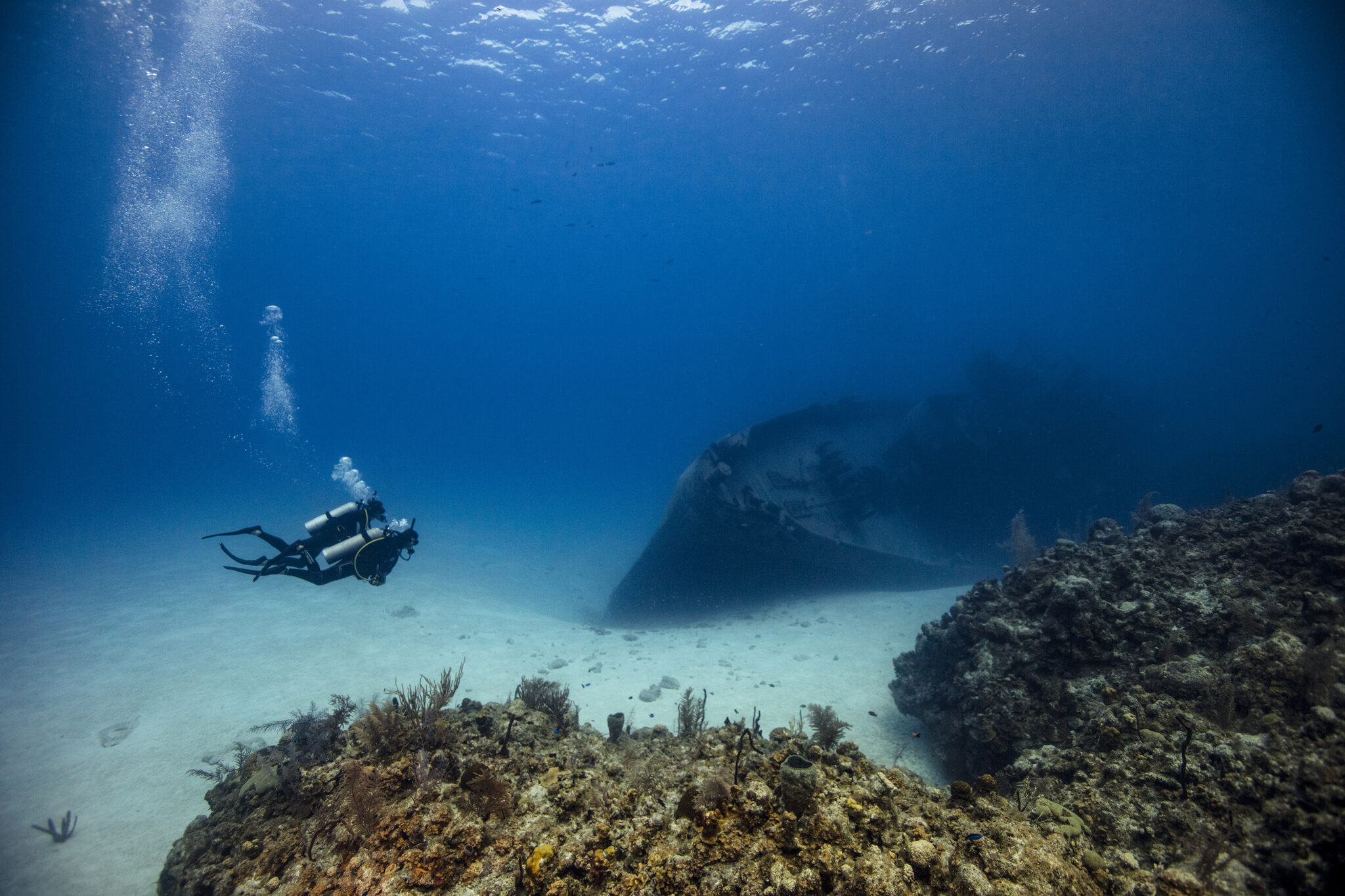
2. Develop New Skills
The five dives required to become a PADI Advanced Open Water Diver include two mandatory dives: the Underwater Navigation Adventure Dive and a Deep Adventure Dive (up to 30 meters / 100 feet) as well as three other Adventure Dives of your choosing.
For your three additional dives, you can choose from 13 additional Adventure Dives. These include: Peak Performance Buoyancy, Drift Diving, Night Diving, Boat Diving, Enriched Air, Wreck Diving, Digital Underwater Imaging, Fish Identification, Dive Against Debris, Underwater Naturalist and Search and Recovery.
During these dives, you’ll learn skills, tips, and tricks that will help you on every dive you do in the future. You’ll combine developing existing skills with learning completely new ones, such as how to assess a shipwreck for diving, how to communicate underwater at night, or how to capture great underwater images.
Keep in mind that each Adventure Dive can count toward the corresponding Specialty certification course. If this is something you’re interested in, be sure to discuss your plan with your PADI Instructor.
Below, we’ll dive into a few of the most popular Adventure Dives for Advanced Open Water Diver students.
Deep Diving (Required)
Once you are certified as an Advanced Open Water Diver, you’ll be able to dive to a maximum depth of 30 meters (100 feet), so it is essential that you practice deep diving procedures during your course. That’s why this is one of the mandatory dives. In the theory section, you’ll look at the effects of depth on the human body and on color. You’ll also learn more about decompression illness and nitrogen narcosis, and you’ll plan deeper dives before making one for yourself. During your deep dive, your PADI Instructor will give you a simple tasks to complete at depth.
Underwater Navigation (Required)
Remember the compass skills from your Open Water Diver course? The underwater navigation dive refines your compass navigation skills and shows you how to navigate using kick cycles, visual landmarks, and time. You’ll also discover some of the pitfalls of navigating underwater due to conditions and currents. By honing these skills, you’ll increase your confidence underwater, especially when tackling shore dives with a buddy.
Peak Performance Buoyancy
Are you still going up and down more than you’d like to? Do you use your air faster than your buddies? Do you have trouble staying still underwater? You may want to choose the Peak Performance Buoyancy dive for one of your three additional dives. During this dive, you’ll perfect your buoyancy skills. You’ll also learn how to gauge the weights you need for diving, how to use breath control to fine tune your positioning, how to kick effectively, and ultimately how to be more streamlined, comfortable, efficient, and relaxed underwater.
Drift Diving
Drift diving is another of the additional dive options. This dive makes drifting easy, and it opens up a range of new dive sites. You’ll learn how to plan a drift dive and how to (literally) go with the flow. After making a drift diving entry and descent, you’ll practice gauging and assessing currents underwater with your instructor.
Night Diving
Why limit yourself to seeing only the marine life that’s active during the day? As the sun goes down, many of the most cryptic critters come to life! If you choose a night dive as one of your additional three dives, you’ll learn how to plan a night dive, how to communicate with your buddy during a night dive, as well as how to navigate underwater at night.
Digital Underwater Imaging
Capture your best underwater moments on camera! During the Digital Underwater Imaging Adventure Dive, you’ll learn about different camera systems and settings, the importance of underwater lighting, what constitutes good image composition, focus points, and how to reduce backscatter and blur.
By the end of your Adventure Dive, you will have captured a collection of Instagram-worthy images!
Fish Identification
During the Fish Identification Adventure Dive, you will learn how to identify different families of fish as well as specific species. You’ll also learn how to use fish identification books, different strategies for identifying fish, and how to use an underwater slate for fish identification purposes. Once you have learned more about identifying fish and are armed with the ability to identify what you’re looking at underwater, you’ll find your dives much more satisfying.
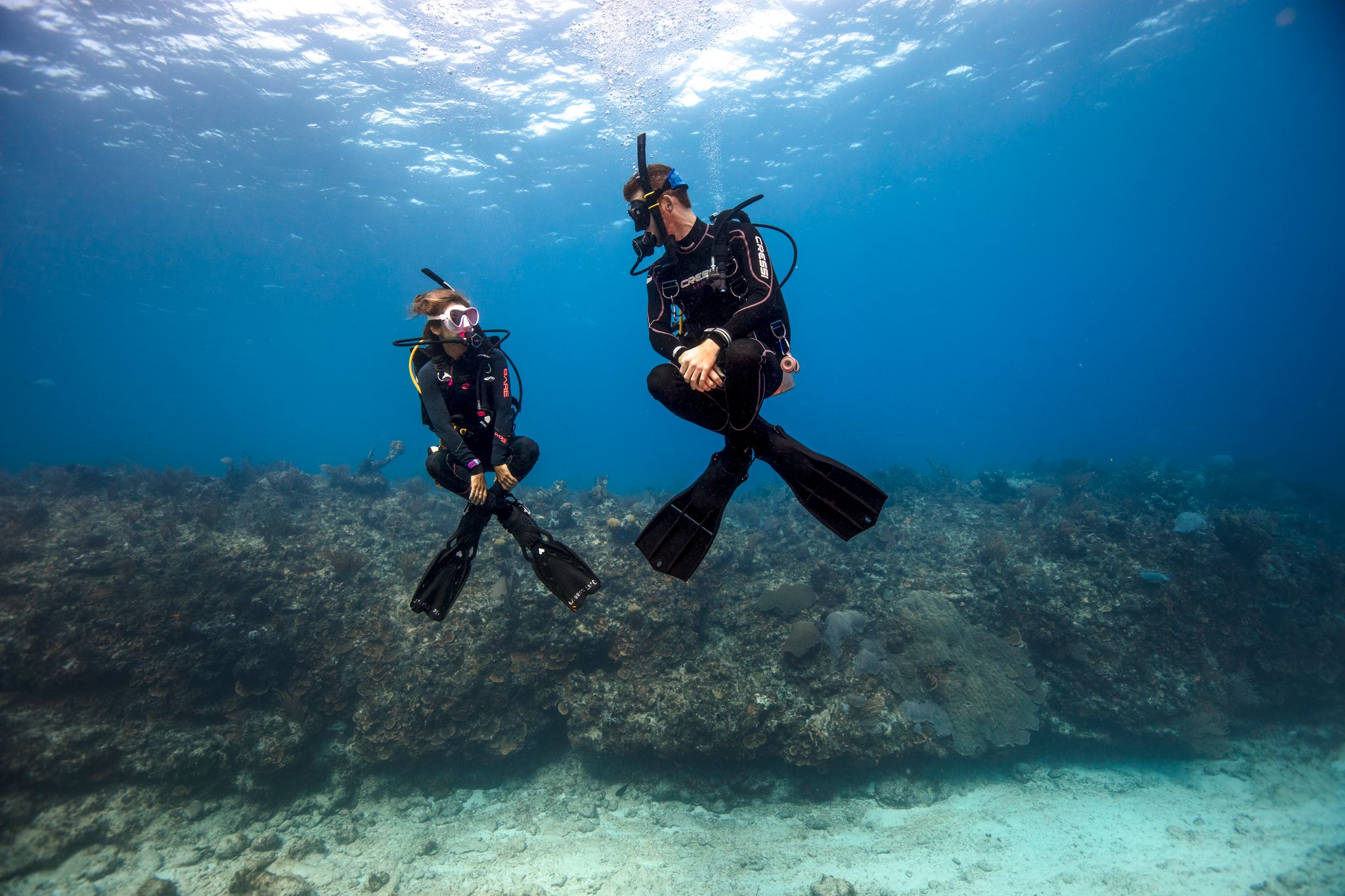
3. Improve Your Air Consumption Rates
Many new divers will find that after their Open Water Diver course, they are using their air faster than more experienced divers. The dives during the Advanced course (particularly the Peak Performance Buoyancy Adventure Dive) go a long way toward solving this problem. During your five Adventure Dives with your instructor, your confidence underwater will grow as you begin to feel more comfortable. This confidence, combined with becoming more efficient underwater, will help you develop a more regular and relaxed breathing style, which will increase your air efficiency – meaning longer dives and more time underwater.
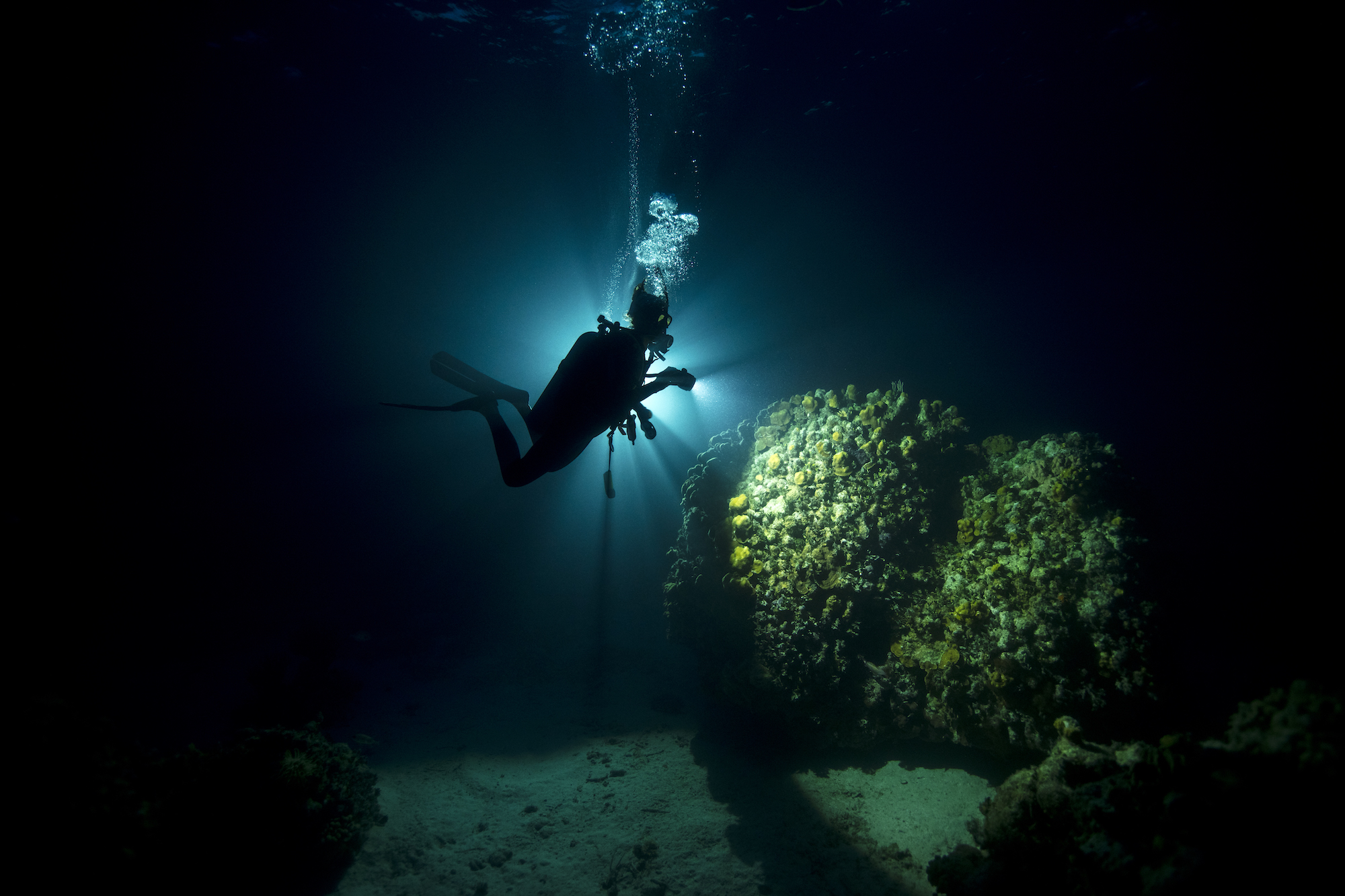
4. Discover New Marine Life
Marine life is the main reason most divers learn, and continue, to dive. There are multiple options within the Advanced Open Water Diver course to increase your opportunities to see a wider range of marine life. Being certified to dive to 30 meters/100 feet gives Advanced Open Water Divers the chance to see marine life that lives at deeper depths – which includes many pelagic species. Night diving also gives divers the opportunity to see marine species not active or hidden away during the day. While drift diving may not mean seeing different species, it certainly can increase the volume of fish that are seen on a dive, as fish rely on currents to bring in a stream of plankton.
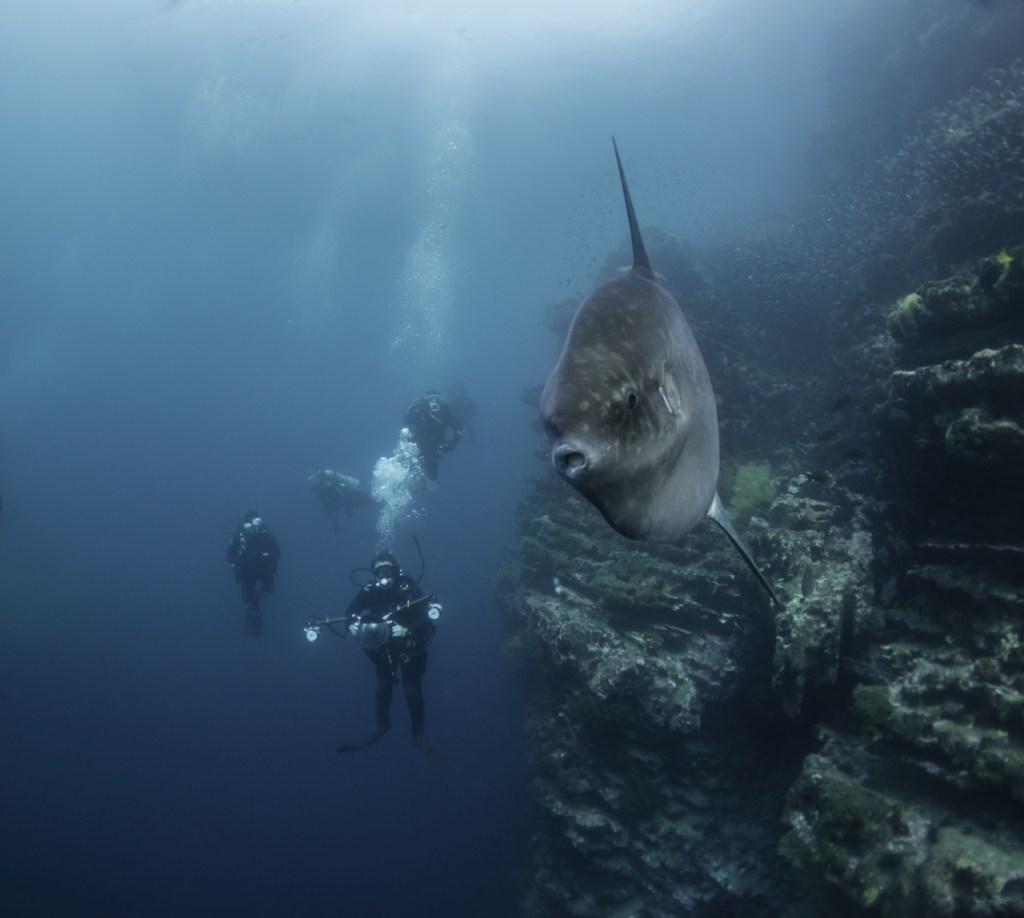
5. Discover New Places and Travel Opportunities
Your PADI Advanced Open Water Diver certification card is literally your passport to a world of diving adventures. You’ll no longer be limited to areas that are considered suitable for Open Water Divers (although you can still explore those, too!). You’ll be able to explore new areas that offer deeper dive sites, drifts and different conditions.
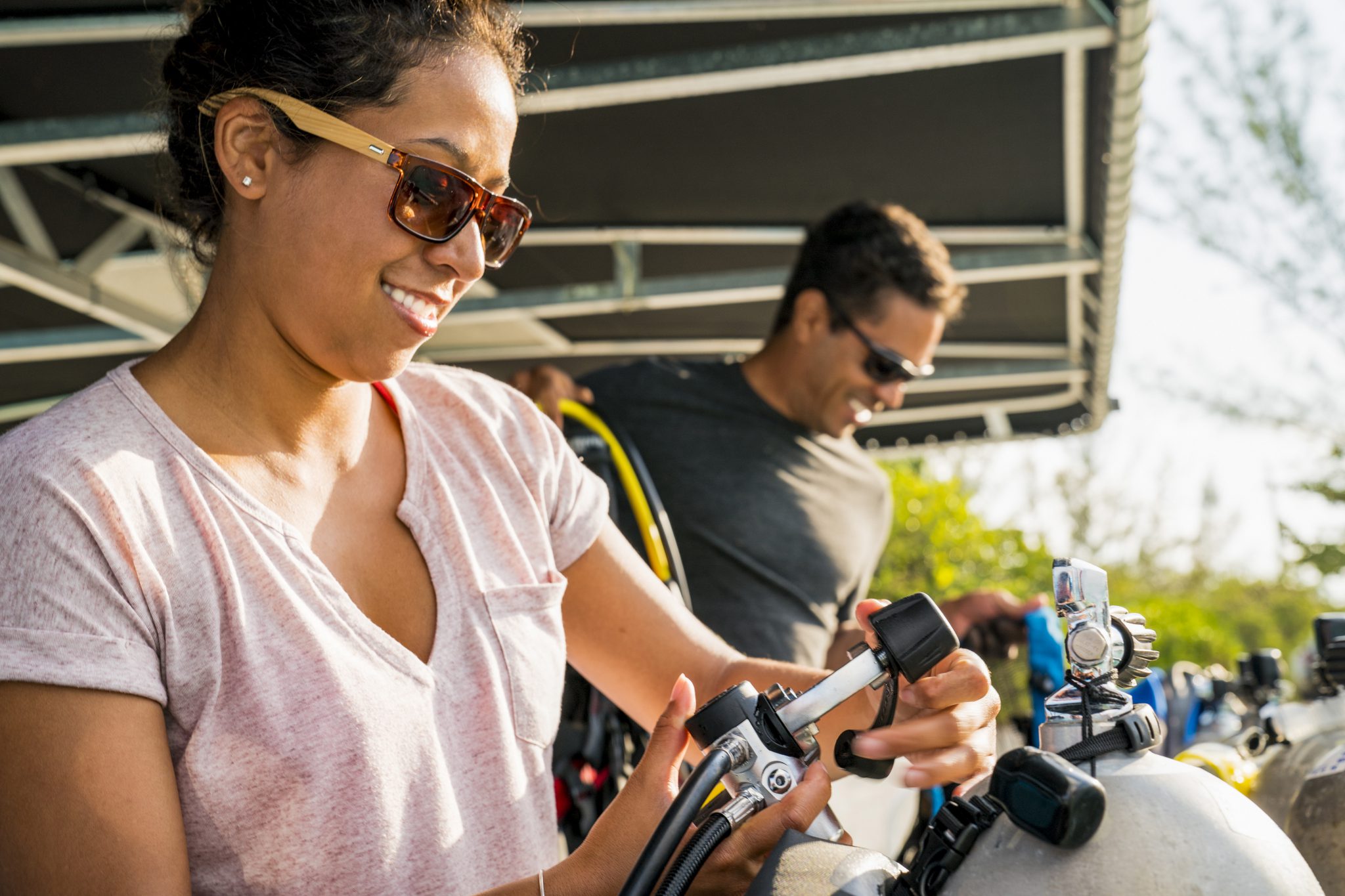
6. Build Confidence Underwater (and on Land)
By completing a further five dives under the guidance of a PADI Instructor, your confidence underwater and your confidence in your abilities underwater will grow exponentially.
Just as you felt a sense of achievement and a boost in confidence when you completed your PADI Open Water Diver course, you’ll experience an even bigger boost when you complete your PADI Advanced Open Water Diver course.
7. One Step Closer to Master Scuba Diver
Each of the five Adventure Dives you’ll complete during the course is also the first dive of the associated Specialty Diver course. Complete your PADI Rescue Diver course along with five Specialty Diver courses, and you will be eligible to apply for your PADI Master Scuba Diver rating – the black belt of recreational diving!
Are you already reaching for your fins and looking for your logbook? Sign up for your Advanced Open Water Diver course today, and get started on your eLearning right now.
P.S. The PADI Advanced Open Water Diver eLearning course is one of the many eLearning courses on which PADI Club members save 20%. Click here to join PADI Club today!



